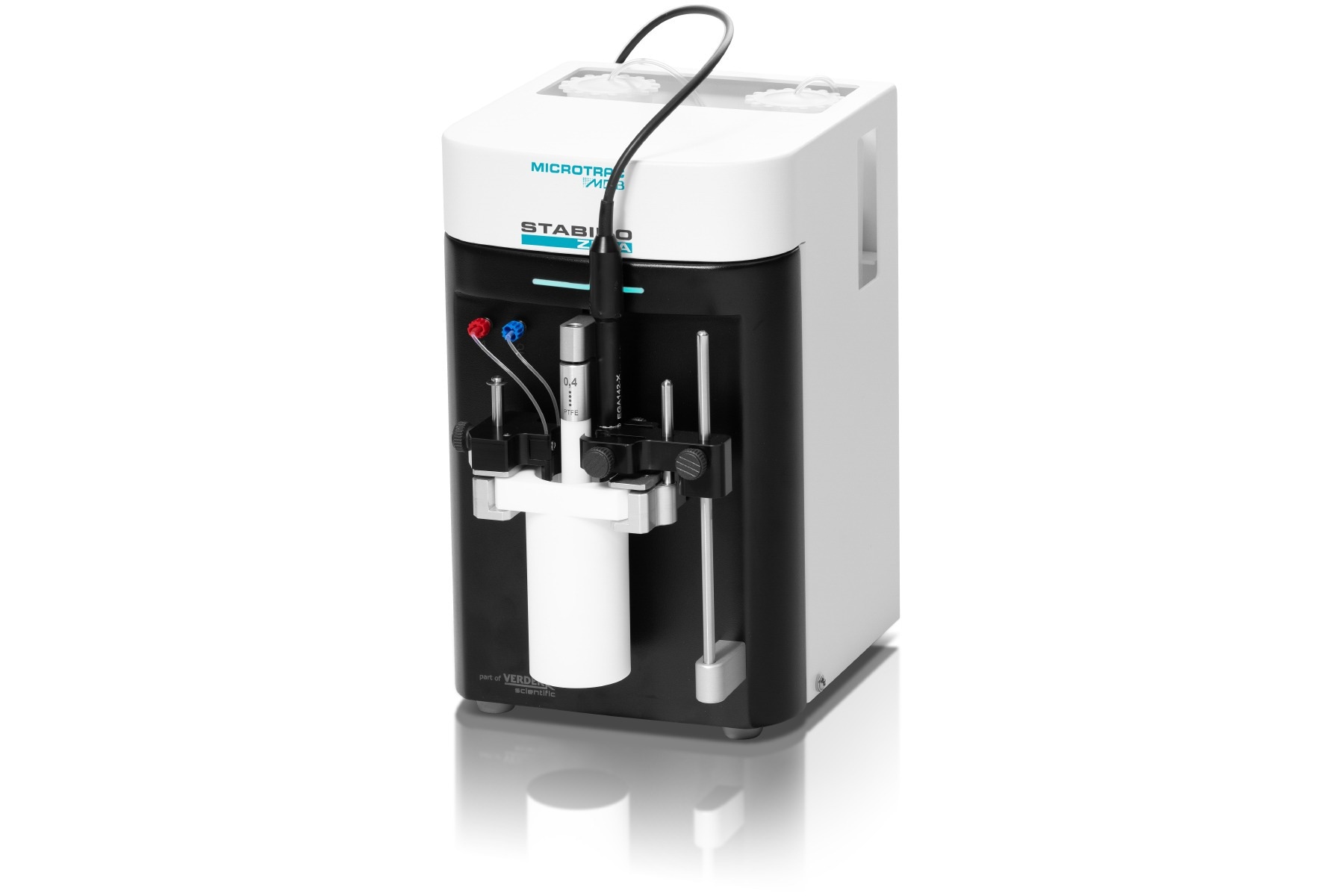The STABINO ZETA is the first choice for the precise determination of zeta potential and colloidal stability. It can replace the classical zeta potential measurement and executes very rapid titrations.
Particle surface charge and interface potentials, like the zeta potential and the streaming potential, are used extensively to characterize the stability of suspensions, nanoparticles and emulsions. These are typical measurement parameters representing the electrostatic repulsion between particles.
The STABINO ZETA provides high resolution and data point density, enabling very quick, accurate and reproducible zeta potential measurements. It is possible to measure the zeta potential of particles in the range of 0.3 nm to 300 µm in a concentration range of up to 40 volume percent.
Concerning the improved measurement technology, the STABINO ZETA can quantify up to 5 parameters simultaneously and within a few seconds: Zeta potential, streaming potential, pH value, conductivity and temperature. In combination with the unique NANOTRAC FLEX, the particle size can also be quantified as a sixth parameter in the same sample.

Image Credit: Microtrac MRB
Flawless Titration
Moreover, the STABINO ZETA features a built-in titration function which allow sto determine all parameters simultaneously at each titration dosing step. The determination of the isoelectric point is one of the titration options and is done within a few minutes. Given below are the titration options.
PH Titration
- Stable pH ranges
- Determination of the isoelectric point
Polyelectrolyte Titration
- Statements regarding stability
- Dispersant optimization
- Charge density
- Optimization in the formulation of users’ products
Titration with Salts
- Zeta potential is considered a function of conductivity
Advantages at a Glance
Five Measurement Parameters at the Same Time
To determine the quality of samples, more than one measurement parameter is often needed. The STABINO ZETA provides data on conductivity, streaming potential, zeta potential, temperature, and pH of samples with every measuring point.
“Mix And Measure”—An Enormous Advantage
As a result of the constant and quick mixing of the sample and the titration solution, a charge titration can be completed in minutes and, additionally, prevents sedimentation.
Measuring During Titration
With the STABINO ZETA software, users can follow the complete titration or measurement in real-time through the curve progression, because for each titrated drop users receive a measuring point with all five measuring parameters.
Adjusted Titration Speed
The titration speed of the STABINO ZETA can be adapted to the reaction speed of the sample. For this reason, the software allows you to specify standard operating procedures (SOPs).
Fast Measurement Time
The majority of analytical systems are based on the zeta potential of electrophoresis, where titrations often seems to be too laborious and inaccurate
For high sample throughput and, therefore, valuable time savings, the STABINO ZETA has been improved so that parameters required for quality control, for instance, can be determined within seconds.
For a polyelectrolyte or pH titration, the STABINO ZETA needs only 5 to 15 minutes and can record several hundred data points.
Simple Operation
The software is designed as user-friendly as possible. Users simply have to pour 1 to 10 mL sample into the Teflon beaker of the STABINO ZETA, and then open the software and begin the measurement.
Extension: In-Situ Size Distribution
Users might not just be interested in the zeta potential of a sample, but also want to determine the particle size distribution.
Microtrac's NANOTRAC FLEX can be easily combined with the STABINO ZETA, that is, the NANOTRAC FLEX measuring probe can be integrated into the STABINO ZETA measuring cell. This enables the size distribution to be determined either alone or, for instance, during a charge titration.
Coagulation becomes “visible” in-situ based on particle size, and it is possible to determine the critical agglomeration point of a sample. This is very helpful to assess colloidal systems even more accurately.